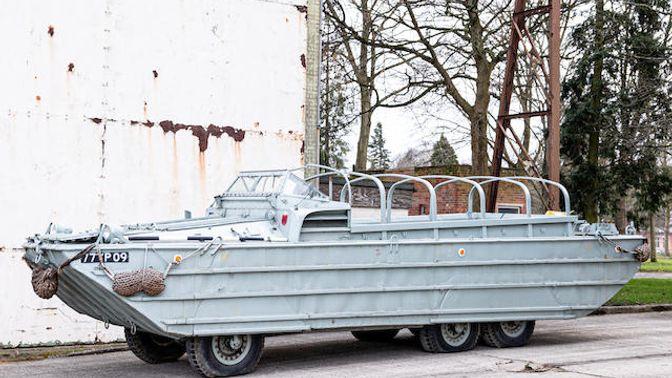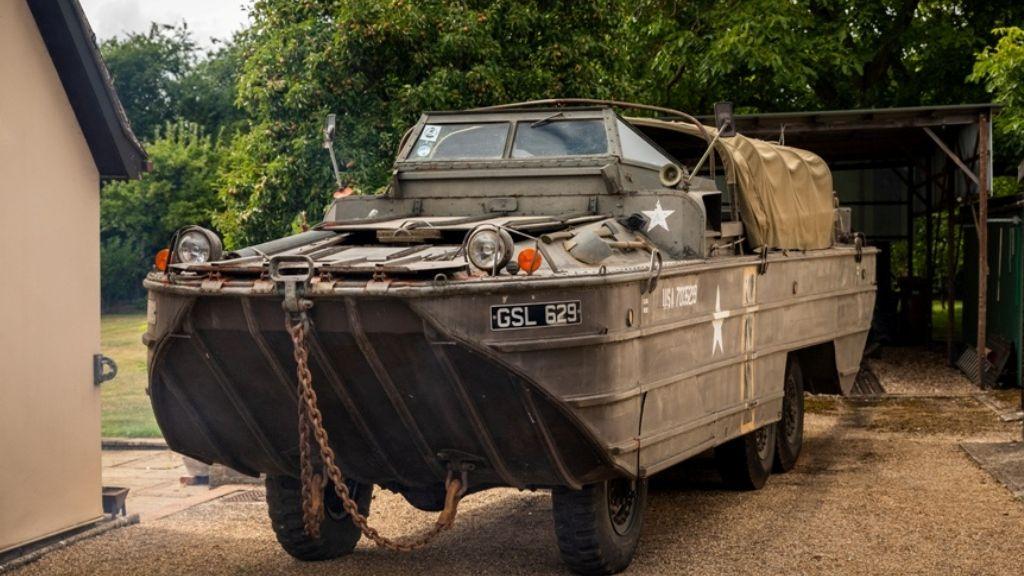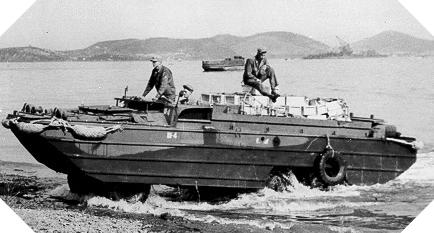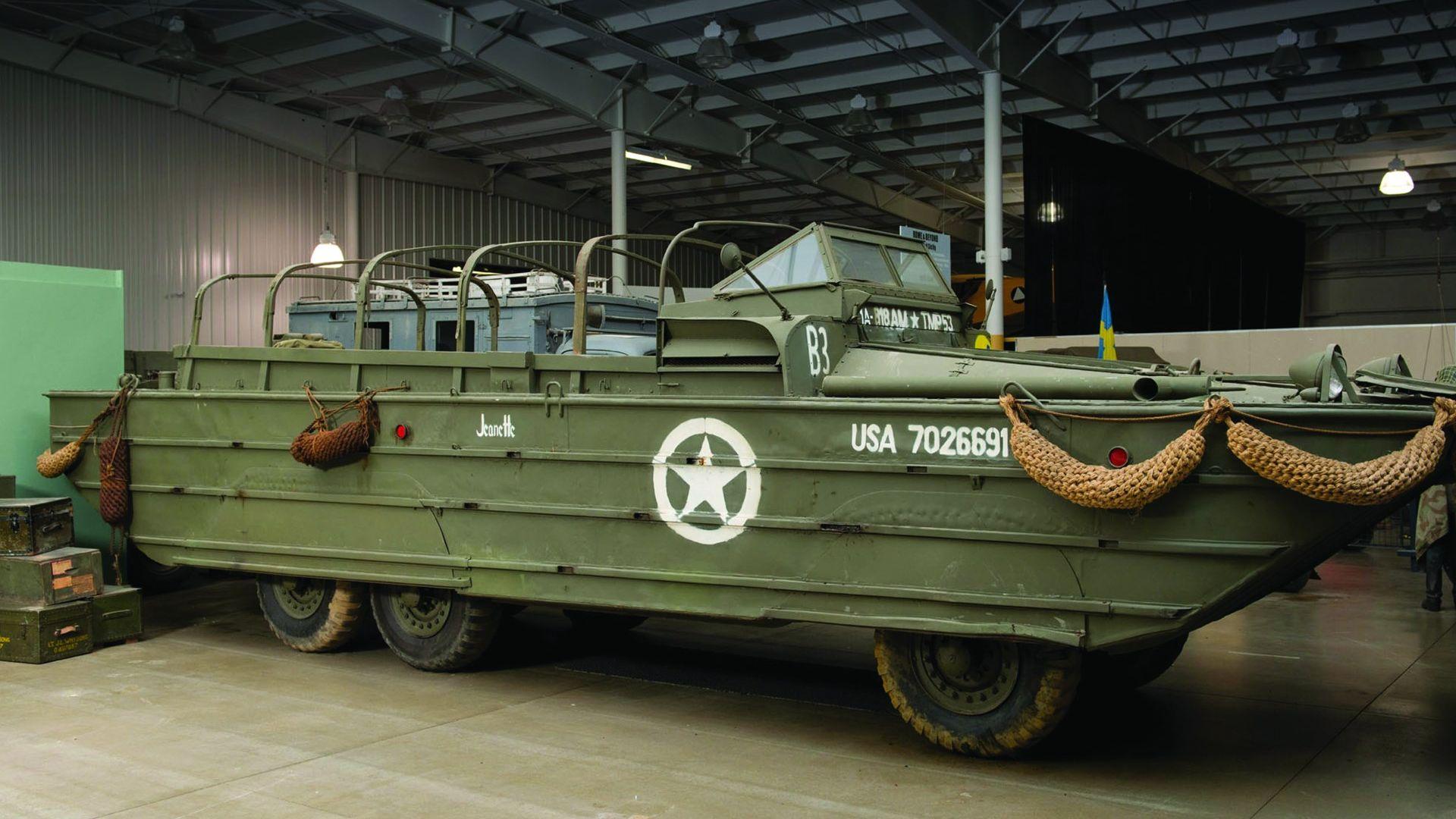1944 GMC AMPHIBIOUS VEHICLE DUKW
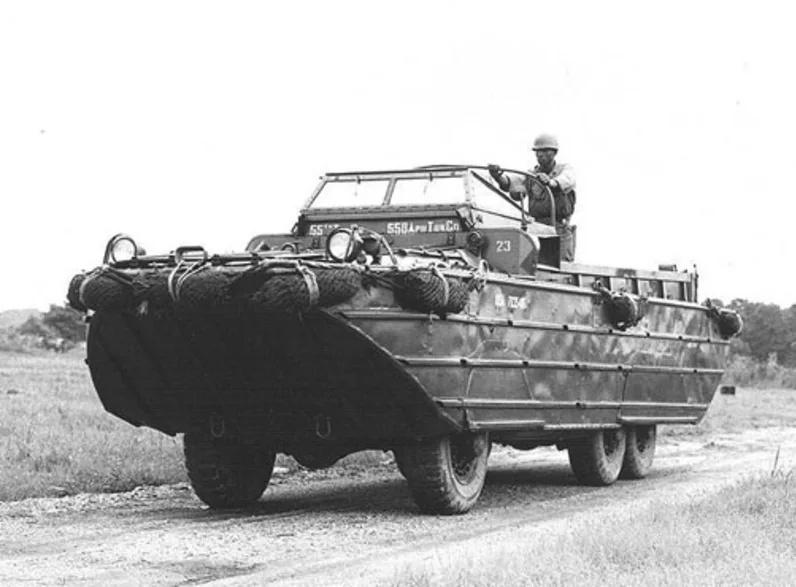
The descriptions of the Classic Cars in the Directory were partly generated or supplemented with the help of artificial intelligence (AI). The content may occasionally not always be entirely accurate or factually correct despite careful checking.
The GMC Amphibious Vehicle DUKW 1944, also known as the Duck, is a unique mode of transportation that was utilized in World War II for amphibious operations. This vehicle is designed to operate on land and water, making it highly versatile and capable of handling a variety of different terrains.
The DUKW has a length of 9.2 meters, a width of 2.4 meters, and a height of 3.1 meters. It is powered by a 4.4-liter, 6-cylinder gasoline engine that provides 94 horsepower and 179 lb-ft of torque. The engine is coupled with a 4-speed manual transmission that allows for smooth and precise shifting.
The DUKW is equipped with a unique 6-wheel drive system that allows it to traverse a variety of different terrains with ease. The drive system can be engaged or disengaged depending on the type of terrain being encountered, and it provides excellent traction and stability.
The DUKW’s hull is made of thick steel plates, making it highly resistant to damage from rocks or other obstacles. The vehicle also has a unique buoyancy system that allows it to float in water, making it excellent for amphibious operations.
One of the most important features of the DUKW is its ability to transport troops and cargo across waterways. The vehicle can carry up to 25 troops or 2.7 tons of cargo, making it highly useful for military operations. Additionally, the vehicle’s watertight design prevents water from entering the interior, ensuring that troops and cargo remain dry and safe during transport.
The DUKW also has a unique braking system that allows it to come to a stop quickly, even in wet or slippery conditions. This system uses hydraulic pressure to apply the brakes, providing excellent stopping power and control.
Overall, the GMC Amphibious Vehicle DUKW 1944 is a highly capable and versatile vehicle that is well-suited for military operations. Its unique design and technical features make it a standout among military vehicles, and its abilities on both land and water make it an essential tool for amphibious operations.
Milestones
- Development of the DUKW began in 1942 by the General Motors Corporation. - The first prototype was built in November 1942 and tested in December of the same year, with improvements made to subsequent prototypes. - The DUKW went into production in March 1943, with initial delivery to the U.S. Army in June 1943. - The DUKW was used extensively during World War II, mainly for transporting troops and cargo from ships anchored offshore to the beachheads during the Normandy invasion. - In total, over 21,000 DUKWs were produced during the war and used by various military forces around the world. - After the war, many DUKWs were sold to civilian owners and converted for use as sightseeing vehicles in coastal cities and tourist areas. - DUKWs were used in several notable rescue missions, including during the 1955 floods in Massachusetts and during Hurricane Katrina in 2005. - In 2020, a DUKW sank in a lake in Missouri, resulting in the deaths of 17 passengers. This prompted renewed safety concerns and calls for increased regulation of amphibious tourist vehicles.Technical
- Manufacturer: General Motors Corporation (GMC) - Model: DUKW 1944 - Type: Amphibious vehicle - Engine: GMC 270 straight-six, water-cooled engine - Horsepower: 104 hp - Transmission: Spicer manual gearbox with 5 forward and 1 reverse gears - Four-wheel drive: Yes, selectable - Amphibious capabilities: Propeller and rudder for water propulsion, water-tight cargo bay with bilge pump - Length: 31 feet (9.45 m) - Width: 8 feet (2.44 m) - Height: 8.5 feet (2.59 m) - Weight: 9.9 tons (8.98 metric tons) - Carrying capacity: Up to 25 fully equipped troops or 2.5 tons (2.27 metric tons) of cargo - Top speed on land: 50 mph (80.47 kph) - Top speed on water: 6 mph (9.65 kph) - Service history: Used by the U.S. military during World War II for transport and supply missions both on land and water. Also used for civilian applications such as tourism and rescue operations.